The Ultimate Guide to Group 24 Battery 24F 24H 24R 24T
Group 24 batteries are well-known for their versatility and reliability, serving as a crucial power source across a variety of applications—from marine and RV systems to solar power setups and more. In this ultimate guide, we will dive into the details of Group 24 batteries, explore the differences between the 24F, 24H, 24R, and 24T subgroups, and help you choose the right battery for your specific needs.
- What is a Group 24 Battery?
- Group 24 Battery Sizes and Capacities
- Applications of Group 24 Batteries
- Pros and Cons of Group 24 Batteries
- How to Choose the Right Group 24 Battery
- Charging and Maintenance Tips for Group 24 Batteries
What is a Group 24 Battery?
A Group 24 battery is classified according to the physical dimensions and terminal configurations outlined by the Battery Council International (BCI). The "Group" designation refers to standardized measurements that ensure the battery fits into designated battery trays and compartments. Group 24 batteries typically measure around 10.3 inches long, 6.8 inches wide, and 9.4 inches high.
Importantly, the "Group" designation does not refer to the battery's capacity, but rather to its size and terminal positioning. Within the Group 24 category, there are subgroups (like 24F, 24H, 24R, and 24T) that offer slight variations in height, terminal layout, or design features to suit specific applications.
Group 24 Subgroups:
- 24: The standard Group 24 battery, commonly used in various applications.
- 24F: Slightly taller, designed for specific Asian vehicles.
- 24H: Similar to Group 24, but with slight differences in lid design or terminal placement.
- 24R: Features a "reverse" terminal layout compared to the standard Group 24.
- 24T: Custom-designed for specialized applications, such as military or industrial uses, with varying sizes and specifications.
Group 24 Battery Sizes and Capacities
While the Group 24 battery has a standard size, each subgroup may have slight variations in its dimensions. Below is a breakdown of the typical sizes and features for different Group 24 batteries:
| Subgroup | Dimensions (inches) | Dimensions (cm) | Capacity (Ah) | Key Features |
|---|---|---|---|---|
| 24 | 10.3 L × 6.8 W × 9.4 H | 26.16 L × 17.27 W × 23.88 H | 70-85 | Standard size, widely used in cars, boats, and solar systems |
| 24F | 10.75 L × 6.8 W × 9 H | 27.31 L × 17.27 W × 22.86 H | 70-85 | Taller, designed for certain Asian vehicles |
| 24H | 10.3 L × 6.8 W × 9 H | 26.16 L × 17.27 W × 22.86 H | 70-85 | Similar to Group 24, but with different lid or terminal layout |
| 24R | 10.3 L × 6.8 W × 9 H | 26.16 L × 17.27 W × 22.86 H | 70-85 | Reverse terminal layout, ideal for specific setups |
| 24T | Varies depending on use | Varies depending on use | Varies | Used primarily in military or industrial applications, with varying sizes |
>>See also How Long Can A 12V 100Ah Battery Power Your Devices?
Applications of Group 24 Batteries
Due to their balanced size and capacity, Group 24 batteries are suitable for a wide range of applications, particularly in situations where reliable power is required. Here are some common applications for Group 24 batteries:
1. Marine Applications
Group 24 batteries are an ideal choice for boats and marine equipment, particularly small boats and fishing vessels. With capacities ranging from 70 to 85 Ah, they are well-suited to power navigation systems, lights, and other essential equipment for extended periods.
2. Recreational Vehicles (RVs)
For RV owners, Group 24 batteries provide sufficient power to run lights, entertainment systems, and other devices while on the road. Deep-cycle versions of Group 24 batteries are especially suitable for RV applications, as they can handle prolonged power draws.
3. Solar Power Systems
Group 24 batteries are also commonly used in solar energy systems as storage units. With their ability to handle multiple charge and discharge cycles, these batteries are a reliable solution for off-grid solar applications, storing energy generated during the day for use at night.
4. Emergency Power Systems (UPS)
Given their dependable power output, Group 24 batteries are often used in Uninterruptible Power Supply (UPS) systems, ensuring that critical devices continue to receive power during electrical outages.
5. Automobile Starting Batteries
Group 24 batteries are also commonly used as starting batteries in cars and trucks, providing the necessary power to start the engine quickly and reliably.
Pros and Cons of Group 24 Batteries
Pros:
- Versatility: Group 24 batteries are versatile and can serve as deep-cycle, starting, or dual-purpose batteries, making them suitable for a variety of needs.
- Standardized Size: These batteries are standardized to fit most battery trays and compartments, making them easy to install in many different applications.
- Durability: Particularly the deep-cycle variants, Group 24 batteries are designed to withstand prolonged charge and discharge cycles, providing long-lasting power.
- Widely Used: From boats to solar power systems, Group 24 batteries are used in a broad range of devices, offering flexibility for various applications.
Cons:
- Limited Capacity: While Group 24 batteries offer decent capacity (70-85 Ah), they may not be sufficient for high-power applications, such as large UPS systems or industrial machinery. In such cases, larger battery groups might be required.
- Maintenance Requirements: Like other lead-acid batteries, Group 24 batteries require regular maintenance, including terminal cleaning and checking the electrolyte levels to ensure proper function.
- Weight and Size: While Group 24 batteries are relatively compact, their weight can be a limiting factor for certain applications where space and weight are critical considerations.
>>See also How Many Amps Does 5000 Watts Equal A Complete Guide?
How to Choose the Right Group 24 Battery
When selecting a Group 24 battery, there are several key factors to consider:
1. Application Needs
- For deep-cycle applications (such as solar power or RV systems), opt for deep-cycle Group 24 batteries.
- If you need a battery to provide a short burst of power to start an engine, a starting battery variant of Group 24 would be more appropriate.
- If you're looking for high durability and long life, consider AGM or lithium Group 24 batteries.
2. Capacity Requirements
Match the battery’s capacity to your power needs. For general household use, a 70-85 Ah Group 24 battery is often sufficient, but higher power demands may require a larger capacity battery.
3. Maintenance Preferences
Different battery types (lead-acid, AGM, lithium) have varying maintenance needs. If you want to reduce maintenance, lithium batteries may be a good choice, as they typically require less attention.
4. Budget
Lead-acid batteries are typically less expensive upfront but may require more maintenance over time. Lithium batteries have a higher initial cost but offer longer service life and lower maintenance, making them more cost-effective in the long run.
Charging and Maintenance Tips for Group 24 Batteries
Proper charging and maintenance are crucial to extend the life of your Group 24 battery. Here are some essential maintenance tips:
- Use the Correct Charger: Ensure that you use a charger that is compatible with the type of battery (lead-acid, AGM, or lithium) to avoid overcharging or undercharging.
- Regularly Check Battery Health: Inspect the battery terminals for corrosion and ensure they are clean and securely connected.
- Top Up Electrolytes (For Lead-Acid Batteries): If you're using a lead-acid battery, check the electrolyte level periodically and top it up with distilled water as needed.
- Store in a Cool, Dry Place: To ensure longevity, store your battery in a cool, dry location, especially when not in use for extended periods.
Group 24 batteries, including 24F, 24H, 24R, and 24T, are popular choices for a variety of vehicles and applications. While the core battery size and capacity remain similar, the key differences lie in terminal placement and orientation, which can affect the installation and performance based on the specific application.
Make sure to choose the right Group 24 battery for your needs by considering the terminal orientation and vehicle compatibility. Whether you’re powering your car, RV, or marine equipment, selecting the appropriate type of Group 24 battery can ensure better performance and reliability.
If you're in the market for a high-quality Group 24 battery, check out our selection here. We offer batteries with various terminal types to meet your specific needs!

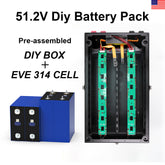

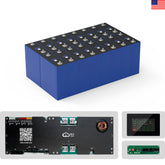

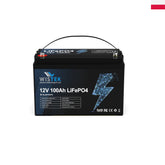
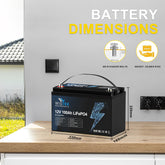
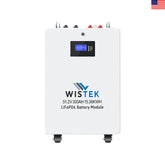
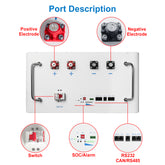
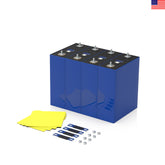
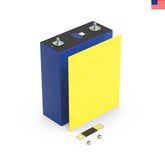
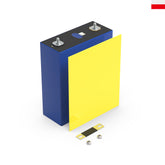

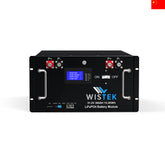
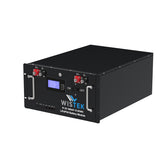
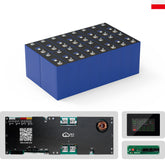








Leave a comment
All blog comments are checked prior to publishing